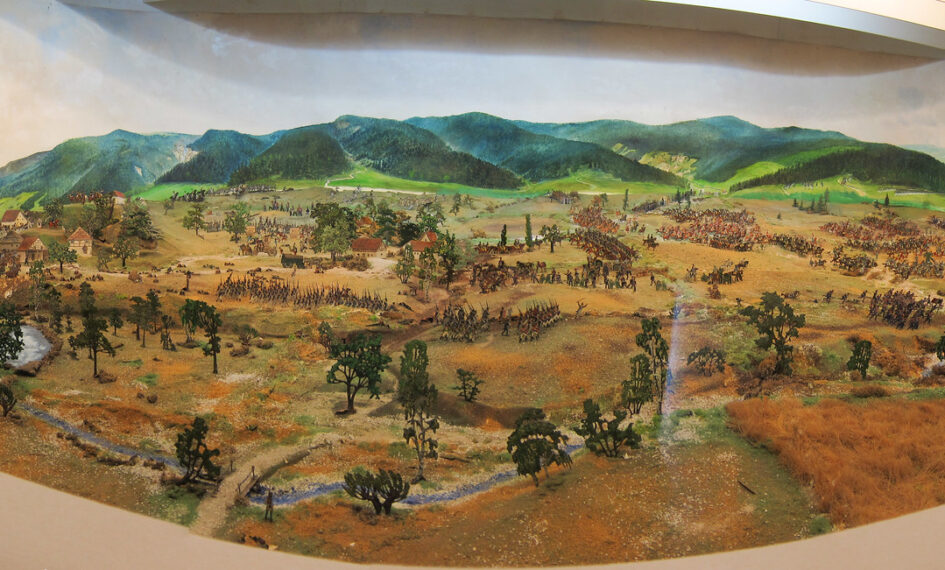- Definition: A diorama is a three-dimensional full-size or miniature model, often depicting a historical, natural, or fictional scene. It typically uses figures, landscaping, and sometimes background paintings to create a lifelike, or sometimes scaled-down, representation.
- Etymology and Origin:
- The word “diorama” comes from the Greek “dia,” meaning “through,” and “horama,” meaning “view” or “sight.” Therefore, it literally means “through-view.”
- The concept of the diorama was invented by French painter Louis Daguerre in 1822. He used a diorama to display his paintings, where light effects would change the appearance of the painting when viewed from different angles.
- This invention led to the popular use of dioramas in the 19th century, especially in museums and exhibitions, where they were used to depict historical or natural scenes realistically.
Diorama: Decoding Its Definition and Greek Origin



